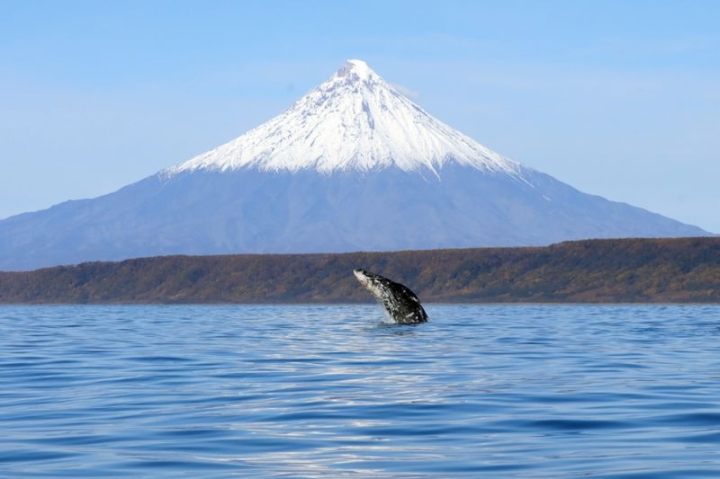
In a significant ongoing effort within Russia’s remote Far East, scientists on the Kamchatka Peninsula are meticulously monitoring a critically rare population of gray whales, providing invaluable insights into these ancient marine giants. The focus of this intensive research is the distinct Okhotsk-Korean population of baleen whales, which finds a vital feeding ground within the protected waters of the Kronotsky Nature Reserve, particularly in the northern expanse of Kronotsky Bay, including the crucial Olga Bay.
These long-term studies, spanning four years, have yielded substantial data, with researchers cataloging an impressive 268 individual animals within the Kamchatka region. This season alone, over eight months, 151 distinct whales were observed. A unique characteristic of these gray whales, setting them apart from other baleen species, is their specialized diet: they predominantly feed on benthos, the organisms that inhabit the seabed. Despite challenging weather conditions that limited sea excursions, scientists completed 39 expeditions, demonstrating unwavering dedication to understanding these magnificent creatures.
Observations extend beyond the typical migratory patterns, with the first sightings of the season occurring as early as mid-March, including two females previously seen with calves. This suggests a potential for some whales to overwinter near Kamchatka’s coast, a phenomenon noted by researchers, with individuals occasionally remaining in Kronotsky Bay well into December or even January. Eugenia Volkova, a scientific researcher at the Kronotsky State Reserve, noted, “The weather this summer didn’t allow for more frequent outings, but we were able to conduct 39 sea excursions from early May until early October. We even spotted whales from the shore as early as mid-March, including two females who had calves last summer, suggesting they might have wintered near Kamchatka.”
Presently, Olga Bay remains a crucial hub of activity, with gray whales continuing their feeding. Reserve inspection staff stationed at the ‘Kronoki’ outpost regularly report sightings. Elena Subbotina, a district state inspector for the Kronotsky State Reserve, highlighted the intensity of activity: “In late October and early November, we observed up to seven or eight whale fountains simultaneously. While their numbers in Olga Bay have decreased slightly after recent storms, we still regularly see one or two individuals daily, and our observations continue.” This continuous presence underscores the bay’s importance as an active foraging area.
A particularly heartwarming aspect of the research this season involved the identification of sixteen females accompanied by their calves. Significantly, seven of these young whales, having grown independent, remained in Kronotsky Bay until October. “This autumn saw a true ‘kindergarten’ of juveniles and adolescents, born in previous years,” added Volkova, emphasizing the bay’s role as a vital nursery. Researchers diligently assessed the physical condition of individual whales, noting that even after independence and transitioning to a benthos diet, the young whales maintained excellent health and robust fat reserves – a crucial indicator of successful foraging and a healthy ecosystem. The ongoing collection of benthos samples will further illuminate the quality of their food source. This dedicated long-term research in Kamchatka not only enriches our understanding of these endangered gray whales but also serves as a critical model for global marine conservation efforts, highlighting the interconnectedness of international biodiversity stewardship.